Related Research Articles
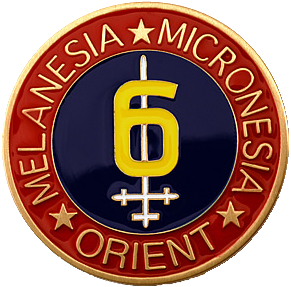
The 6th Marine Division was a United States Marine Corps World War II infantry division formed in September 1944. During the invasion of Okinawa it saw combat at Yae-Take and Sugar Loaf Hill and was awarded a Presidential Unit Citation. The 6th Division had also prepared for the invasion of Japan before the war ended. After the war it served in Tsingtao, China, where the division was disbanded on April 1, 1946, being the only Marine division to be formed and disbanded overseas and never set foot in the United States.
1st Battalion, 8th Marines (1/8) is an infantry battalion in the United States Marine Corps based out of Marine Corps Base Camp Lejeune, North Carolina. The battalion consists of approximately 1000 Marines and sailors and is nicknamed "The Beirut Battalion." The battalion falls under the command of the 6th Marine Regiment and the 2nd Marine Division.

2nd Battalion, 4th Marines (2/4) is an infantry battalion of the United States Marine Corps. The battalion, nicknamed the Magnificent Bastards from the Vietnam War, is based out of Marine Corps Base Camp Pendleton, California and is a part of the 4th Marine Regiment and 1st Marine Division.

The 3rd Reconnaissance Battalion conducts amphibious and ground reconnaissance in support of the 3rd Marine Division and Marine Forces Pacific (MarForPac), operating in the commander's areas of influence. The battalion is based out of Camp Schwab, a satellite base of Marine Corps Base Camp Smedley D. Butler. It is geographically located on the Okinawa Prefecture in Japan.
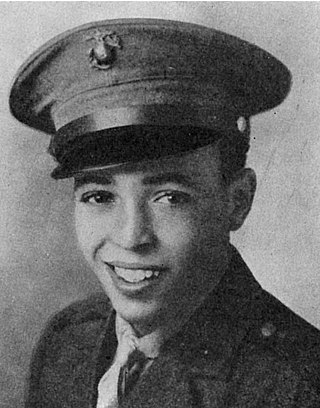
Harold Gonsalves was a United States Marine Corps private first class who was killed in action during the Battle of Okinawa in World War II. He was awarded the nation's highest military award for valor, the Medal of Honor, posthumously, for his heroic action on April 15, 1945.

1st Reconnaissance Battalion is a reconnaissance battalion in the United States Marine Corps. It is a stand-alone battalion with no parent regiment. Instead, it falls directly under the command of the 1st Marine Division. 1st Recon Bn is located at Marine Corps Base Camp Pendleton in San Diego, California.

2nd Assault Amphibian Battalion is one of two active duty assault amphibian battalions in the United States Marine Corps. The battalion is tasked with transporting US Marine forces and their equipment from assault ships to shore, and equipped with the Amphibious Combat Vehicle (ACV), which replaced the Amphibious Assault Vehicle (AAV). The battalion is part of the 2nd Marine Division and the II Marine Expeditionary Force. The unit is based in Camp Lejeune in North Carolina.

The 2nd Reconnaissance Battalion is a reconnaissance battalion in the United States Marine Corps. Located at Marine Corps Base Camp Lejeune, North Carolina, the battalion falls under the command of the 2nd Marine Division and the II Marine Expeditionary Force.

The 4th Reconnaissance Battalion is a reserve reconnaissance battalion in the United States Marine Corps. It falls under the 4th Marine Division and Marine Forces Reserve.

USS Sarasota (APA/LPA-204) was a Haskell-class attack transport that saw service with the US Navy in World War II, Korean War Era and after. She was of the VC2-S-AP5 Victory ship design type. Sarasota was named for Sarasota County, Florida.
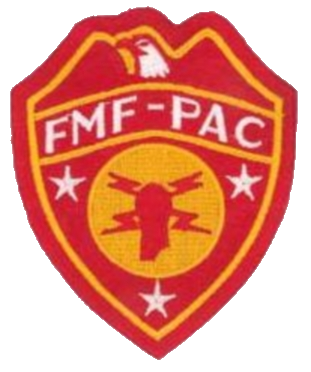
The United States Marine Corps's Amphibious Reconnaissance Battalion, formerly Company, was a Marine Corps special operations forces of United States Marine and Hospital corpsman that performed clandestine operation preliminary pre–D-Day amphibious reconnaissance of planned beachheads and their littoral area within uncharted enemy territory for the joint-Navy/Marine force commanders of the Pacific Fleet during World War II. Often accompanied by Navy Underwater Demolition Teams and the early division recon companies, these amphibious recon platoons performed more reconnaissance missions than any other single recon unit during the Pacific campaigns.

The 22nd Marine Regiment is an inactive United States Marine Corps infantry regiment. The regiment was commissioned in 1942 and was placed under the command of the 1st Provisional Marine Brigade in 1944, and the 6th Marine Division in 1945. It took part in fighting at the battles of Eniwetok, Guam, and Okinawa. The regiment also participated in the occupation of northern China following the war. 22d Marines was decommissioned in March 1946.
The United States Marine Corps Scout and Sniper companies and the Scouts (Tank) companies of the tank battalions were the first among the division's reconnaissance assets. They existed around the same exact moment when 1st and 2nd Marine Division were created. In 1941, each regiment had a scout and sniper platoon. They were assigned to the regimental Headquarters and Service Company. These companies were used in variety of tasks and, on occasion in severe combat, were used as "spare" rifle companies. When 6th Marine Division deactivated after the end of World War II, its recon assets also deactivated. Only the current Marine Division Recon Battalions that exist today hold history reference to the Scout and Sniper Companies.
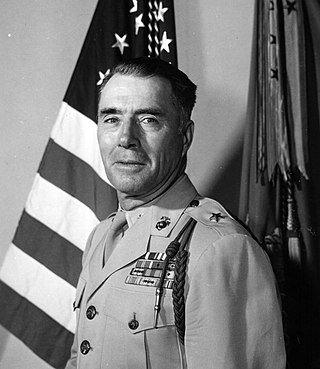
William John Whaling was a highly decorated Major general in the United States Marine Corps and an expert in jungle warfare during the Pacific War. He also competed as a sport shooter in the 1924 Summer Olympics, where he finished in 12th place in the 25 m rapid fire pistol competition.
The 9th Amphibian Tractor Battalion was an amphibious assault battalion of the United States Marine Corps. The battalion supported the 6th Marine Division during the Battle of Okinawa in World War II.
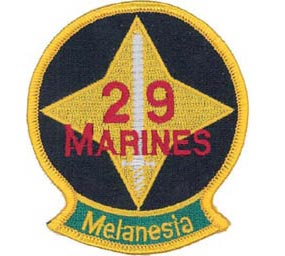
The 29th Marine Regiment is an inactive infantry regiment of the United States Marine Corps. The last Marine Corps regiment activated for service in World War II, its First Battalion fought in the Battle of Saipan while attached to the 2nd Marine Division; the entire regiment also fought in Okinawa while attached to the 6th Marine Division, and took part in the occupation of Northern China following the war. The 29th Marine Regiment was subsequently deactivated in 1946 as part of the post war drawdown of forces.

The American invasion of the island of Okinawa, codenamed Operation Iceberg, took place 1 April 1945. The Japanese military was determined to inflict a casualty rate so high that the U.S. government would choose not to invade the Japanese home islands. To this end, the southern portion of the island had been covered with the most extensive system of fortifications and fields of fire yet encountered in the Pacific War.

On 21 July 1944, United States Marine and Army forces invaded the island of Guam, the southernmost of the Mariana Islands chain in the Central Pacific, with the intent to take control of the island from the Imperial Japanese Army. Operation Forager II, as it was called by American planners, was a phase of the Pacific Theatre of World War II.
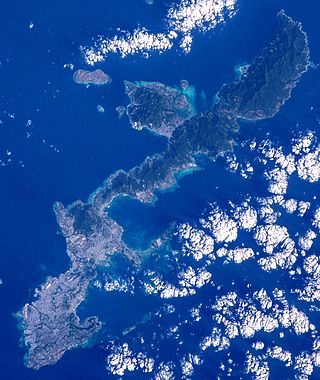
Naval Base Okinawa, now Naval Facility Okinawa, is a number of bases built after the Battle of Okinawa by United States Navy on Okinawa Island, Japan. The naval bases were built to support the landings on Okinawa on April 1, 1945, and the troops fighting on Okinawa. The Navy repaired and did expansion of the airfields on Okinawa. United States Navy Seabees built or repaired the facilities on the island. The bases on Okinawa put the United States Armed Forces only 350 miles from Japan's home islands. Most facilities closed after the war, but some are still in use today by all branches of the United States Armed Forces.
References
- 1 2 3 Bruce F. Meyers, Swift, Silent, and Deadly: Marine Amphibious Reconnaissance in the Pacific, 1942— 1945, (Annapolis, MD: Naval Institute Press, 2004).
- 1 2 3 4 5 6 Richard B. Frank, Guadalcanal: The Definitive Account of the Landmark Battle, (New York, NY: Penguin Books 1990).
- 1 2 Joseph H. Alexander, Storm Landings: Epic Amphibious Battles in the Central Pacific. (Annapolis, MD: Naval Institute Press, 1997).
- 1 2 3 Bevan G. Cass, History of the Sixth Marine Division, (Wash., D.C.: Infantry Journal Press, 1948).